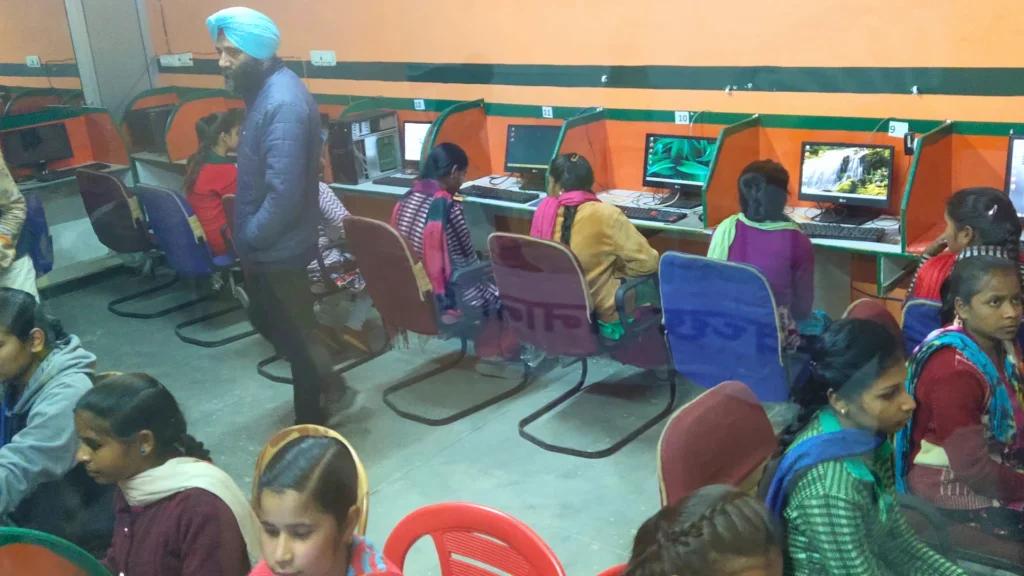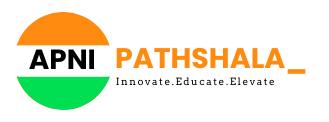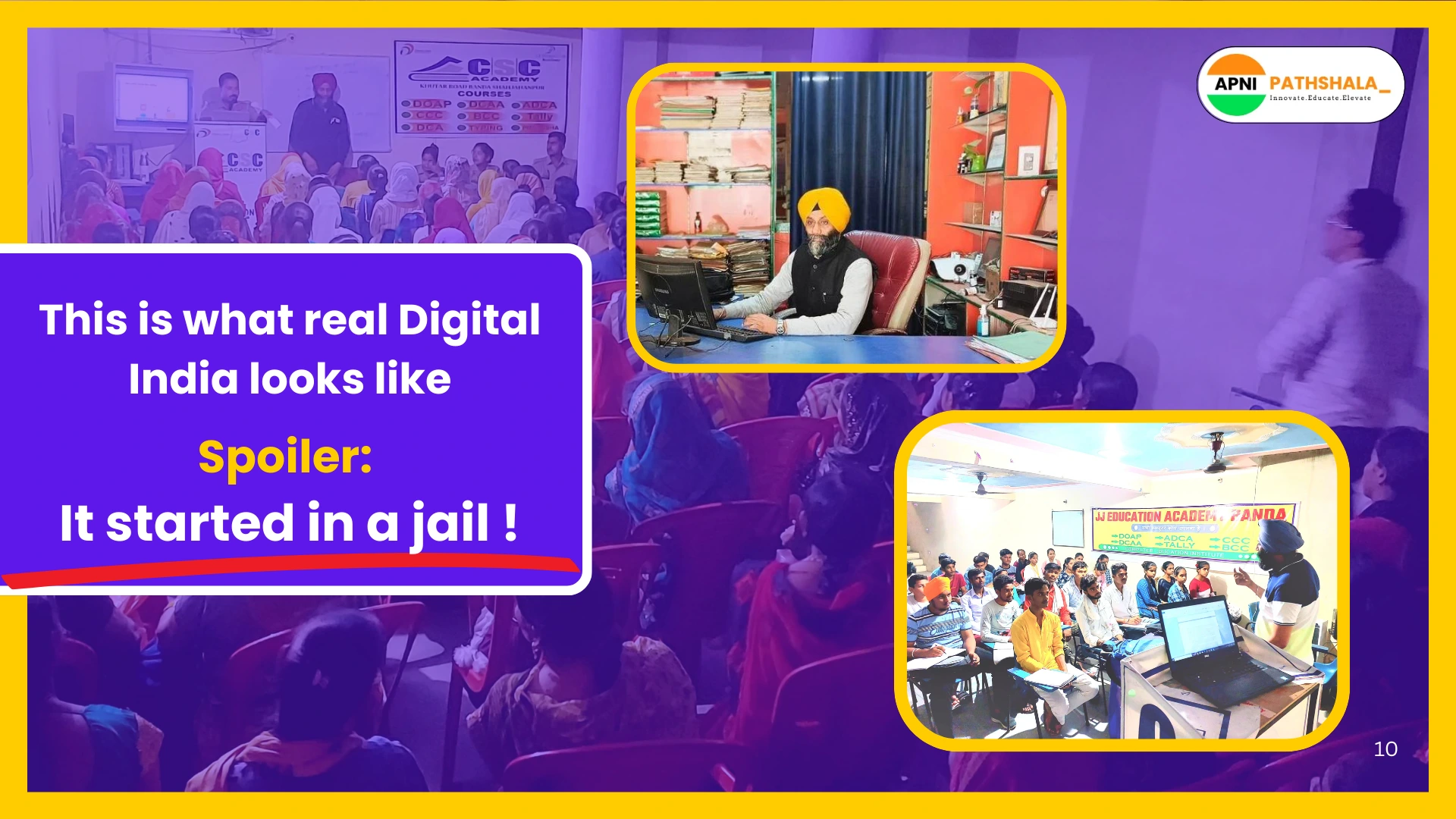Bringing Technical Education to Rural India: JJ Education’s Story
You never know what can change your life.
For me, it wasn’t a motivational seminar. It wasn’t a book or a TED Talk.
It was a prisoner.
Back in 2014, I was working as an Aadhaar enrollment agent. My job took me across districts in Uttar Pradesh, helping people sign up for their Aadhaar cards. One day, I received an assignment that sounded… unusual.
“You need to go to Shahjahanpur District Jail,” the official told me.
Over 1,700 prisoners needed Aadhaar registration. We set up our station inside the jail, and they assigned a helper from their side to assist us, someone who was already familiar with computers.
And that’s when I met him.
A confident, composed man who knew his way around systems and software like a pro. Out of curiosity, I asked, “Are you part of the jail staff?”.
He smiled: “No sir, I’m an inmate.”
He was managing the jail’s IT lab, handling online court proceedings, and helping others with basic digital work inside the prison. His story? A family dispute gone terribly wrong. He wasn’t proud of where he was, but his tech skills gave him purpose and a second chance.
That moment changed something in me.
The Birth of a Dream: Taking Technical Education to Rural India
That prisoner made me think: “If digital skills can restore someone’s identity behind bars… imagine what it could do for our rural youth, women, and communities.”
In rural India, especially in places like Shahjahanpur, Pilibhit, Sitapur, Hardoi, technical education is nearly non-existent. Government schools often have no computers. Even private schools rarely go beyond textbook theory. Most rural youth finish school without knowing how to turn on a computer.
That had to change.
So in 2016, we started our own digital literacy initiative. It was small at first, just a few laptops, one rented room, and big dreams.
Digital Literacy in Villages: The First Step
We began with basic computer training for rural students:
- Introduction to computers
- MS Office
- Email and internet use
- Online form filling (essential for government jobs)
- Creating IDs, uploading documents, etc.
This wasn’t just theory. We made sure every student got hands-on experience.
Soon, word spread. Parents started enrolling their kids. Then came Anganwadi and ASHA workers: frontline women who were being left behind in the digital shift. We trained them too.
One ASHA worker told us,“Earlier, I had to go to the shop and pay ₹30 just to get a form filled. Now I do it myself at home.”
That’s the power of free digital literacy programs.
No Age Bar, No Fancy Requirements. Just a Willingness to Learn
One of our earliest decisions was to make learning accessible for everyone.
Whether you were a 16-year-old school dropout, a 35-year-old homemaker, a 55-year-old SHG member who had never touched a computer…You were welcome!
We had classrooms where mothers and daughters sat together, learning side by side. One of our oldest students was 62. She now helps others in her community navigate UPI apps and government schemes online.
Technical Training That Leads to Jobs
As demand grew, we introduced advanced technical education courses in villages like:
- Tally ERP 9 and Tally Prime (for accounting and GST billing)
- CCC (Course on Computer Concepts)
- Financial literacy & digital transactions
- Basic hardware and troubleshooting
These aren’t just fancy certifications. They’re job-ready skills.
One of our students completed our Tally course in Shahjahanpur. Within a month, he was hired at a local trader’s shop. Today, he manages digital billing, stock inventory, and even helps customers with e-payments.

Women Empowerment Through Computer Education
Something beautiful happened along the way.
Our women learners, many of whom had never stepped out alone, started gaining confidence. With support from organisations like Shiv Nadar Foundation, we trained 23 Self-Help Group (SHG) women under our Adult Literacy Program.
These women became local teachers in their villages.
They now:
- Run literacy classes for adults
- Teach basic digital tools
- Earn ₹9,300 per month
- Are respected as “digital didis” in their areas.
Reaching Remote Villages with a Digital Van
In 2018, the Ministry of IT supported us with a special van fitted with 245 laptops. Think of it as a mobile computer lab.
We took this van to:
- Schools without computers
- Remote villages with no access to tech
- SHG centres and panchayat offices
We trained over 800 villagers in one round alone. It wasn’t just about computers. We taught them:
- How to apply for jobs online
- Access pension schemes
- Use UPI and mobile banking
- Book tickets and appointments digitally
This is true digital literacy in rural India: practical, relevant, and life-changing.
A Permanent Learning Pod, Thanks to Apni Pathshala
While the van was powerful for outreach, we needed something permanent and local, a place where learners could come consistently, explore freely, and go deeper into technical education.
That’s when Apni Pathshala stepped in.
They helped us establish a community learning pod right in the village, equipped with personal computers, high-speed internet, and open-access resources.
This pod became:
- A hub for digital literacy workshops
- A safe space for girls to learn tech hands-on
- A launchpad for youth-led micro-projects, from digital poster design to budgeting tools in Excel
We’ve seen students walk in shy, hesitant, barely touching the keyboard. And within weeks? They’re creating presentations, managing spreadsheets, and teaching their own siblings what they just learned.
Thanks to Apni Pathshala’s support, this rural computer center became a living example of what grassroots digital empowerment can look like.
How Do We Sustain It? (And What’s Free)
We’re often asked: “Is all this free?”
Here’s the honest breakdown:
- Basic digital literacy programs (like 20–30-day modules) are completely free, especially for youth, women, and SHG members.
- Advanced certifications like Tally, CCC, and GST Billing are offered at minimal fees, just enough to cover electricity, internet, and instructor salaries.
- For women-led learning programs, CSR partners like Capgemini help cover costs. They recently supported us in training 1,000 villagers in digital and financial literacy.
We never let money become a barrier to learning. If someone wants to learn, we find a way.
The Bigger Vision: Digital Bharat from the Grassroots
India talks about Digital Bharat, but that future won’t come from startups alone.
It’ll come from a girl in Pilibhit who can now teach her siblings how to use Google Docs. A widow in Hardoi can now check her PM Kisan Yojana status on her own. A farmer’s son who now teaches Tally in his block. A self-help group woman who manages UPI payments and trains others.
This is the real impact of technical education in rural India. This is how computer training in villages can change lives.
And it all started because one prisoner showed us the power of second chances.
(Interviewee is Gurdeep Singh, the coordinator at J.J. Education)


4 Comments
Truly inspiring! JJ Education is really reshaping society.
Such an amazing Story of JJ education.
What an inspiring story!! This proves that everyone needs a second chance.
JJ Education is truly making a difference in rural India. By providing hands-on digital literacy and job-ready skills, they are empowering youth and women to become independent and confident. The initiative shows how grassroots education can bridge the digital divide and create lasting impact. Kudos to their efforts!